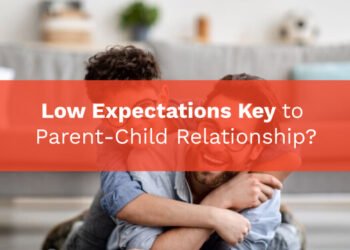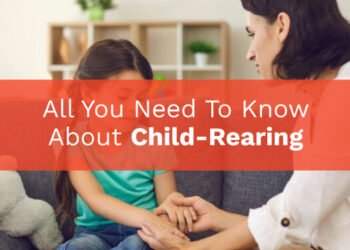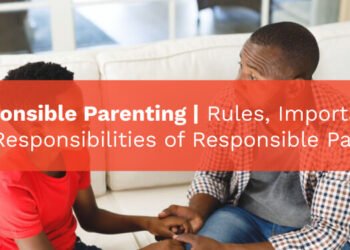Before learning about the pros and cons of bilingual education, firstly, let us read to know what bilingual education is?
Education is an essential part of life. It improves one’s knowledge, skills, teaches morals, ethics and helps to make a productive individual. Education is the key to success.
Bilingual education plays a fundamental part in the life of children. Bilingual education is the process of teaching academic content to children in two different languages. One is the native language, and the other is the secondary language depending upon the requirements specified in the lesson plans and program model.
Bilingual education has been widespread over the past few decades, and it’s pretty common nowadays. Children who learn two different languages are more likely to perform tasks better, have better skills, be it problem-solving or decision-making.

Bilingual education ensures complete fluency in their native language. And more importantly, it enhances the understanding of each culture. While still empowering students to create comprehensive talking, pursuing, learning, reading, and writing.
Learning a dual language helps them excel in their academics. It opens opportunities to study, live and work in several places worldwide. They even get to know different cultures and have new experiences. The benefit of bilingual education starts from elementary and follows throughout their life.
Types of Bilingual Education
- Transitional Bilingual Education
This type of bilingual education is also known as an early exit. It typically involves the complete or partial use of the student’s native language amid their early years in school and afterward moves towards English only.
It helps the student make a switch to English-speaking classrooms as soon as they can. Students are usually from the same background in transitional bilingual education.
- Immersion Bilingual Education
In Immersion Bilingual Education, the students are often from a non-English speaking background. All subjects are taught in the English language so that the children can learn faster. The main idea is to fully immerse the students in the second language throughout the school day.
- Two Way Immersion Bilingual Education
Two Way Immersion Bilingual Education aims to help English, and non-English speakers learn, read, write, and speak in a second language. This type of bilingual education is also known as dual-education.
Simply, it helps native speakers learn English as their second language and vice versa. It is a form of dual language education in which a balanced number of native English speakers and native speakers of the partner language are integrated. Thus both groups of students are in the same class, and the content matter is delivered in both languages.
Here are some Pros and Cons of Bilingual Education that might be helpful for you. Read on to know more about bilingual education.
Pros of Bilingual education:
It makes it easier for children to learn a second language.
Learning is a never-ending process. It makes your mind engaged and makes your body active. Children are seen as learners; they learn by observing, assembling, and experimenting.
In bilingual education, children learn foreign languages faster than grown-up adults.
They accept the learning process as a part of their curriculum, so it is easier for them to learn a new language.
When practicing a new language in school, there is a minor embarrassment.
Bilingual education makes the whole education process more exciting. It encourages development because learning first and the second language is carried simultaneously.
Achieve better academics.
According to research by Thomas and Collier from George Mason University, “Students who had bilingual education and spoke and wrote in multiple languages have a cognitive advantage and greater achievements than their monolingual peers.”
Students who learn multiple languages have a vital brain function since their minds are challenged learning multiple languages. They have long term-career benefits too. Dual language students score good marks and are happier in school than children learning one language.
It promotes cultural awareness among children.
One of the critical benefits of bilingual education is it promotes cultural benefits. Through bilingual education, children are exposed to the tradition and identities of a different world. They are aware of different cultures and languages on our planet, which helps increase our children’s tolerance.
Teaching children two languages helps to promote cultural diversity at an early stage.
Bilingual education offers them a chance to learn and celebrate the diversity found in human cultures. Children learn from differences at a very early stage of learning society rather than being scared of them.
Multiple personal benefits.
People who learn dual languages can gain multiple personal benefits. It expands their capacity to learn and process new sounds, especially those who use different languages regularly. It helps in the communication process and will be easier to work in different places worldwide.
Students pursuing bilingual education have great personalities and self-esteem. These students are less likely to face personality disorders, including anxiety, and have a higher confidence level. Bilingual children are more likely to sharpen their social-emotional and behavioral skills.
Provide better career opportunities.
Children learning a dual language in their school life are more likely to grab great career opportunities. In this modern era, being fluent in multiple languages instead of one language stands out in the job market.
They can confront challenges and problems in the future. In the US, the Spanish-speaking population is dwarfing those who are speaking in English.
Studying more than one language rather than their native language during school time provides more excellent career opportunities. It helps to set up their professional life. A language differential can include up to 20% to a worker’s compensation per year, depending on the market.
Provides opportunities to participate in the exchange program.
Numerous bilingual education offers an exchange program with schools in outside nations. So, by attending schools that offer bilingual education, children get to know about a diverse culture at a youthful age, which may significantly benefit you in later parts of your day-by-day life.
Therefore, participating in those exchange programs may be another advantage of bilingual education.
Improves Cognitive Skills
Numerous researchers and scientists accept that learning a second language can help us to improve our mental capacities. Our brain will learn multiple languages, adapt them and build up new capacities to process all that information.
Hence, bilingual education helps to improve the overall capacity of learning. Bilingual students have the intellect and motivation to take on complex school assignments, leading to academic and behavioral gains.
Bilingual students have more extraordinary memories, can focus better, are more creative, can multitask, and are great at problem-solving and decision-making than monolingual students.
So these were the pros, now let’s talk about the cons of Bilingual education.
Cons of Bilingual Education
Bilingual programs are inconsistent over time.
Some schools offer bilingual education only in elementary school and stop the education program at high school. Since students are not using it daily, some of them lose their second language abilities.
This inconsistency is not effective at all, and for bilingual education to be effective, it must proceed through the student’s academic careers and all through their lives.
Lack of qualified teachers and assistants.
One of the main reasons behind the bilingual education system is the lack of qualified teachers. It is tough to find proficient teachers in both the subject and the language they teach.
It can be challenging to discover teachers with that higher fulfillment. The bilingual teachers and assistants need to be calm, patient, and firm about the student’s progress and handle the problems.
Many fluent people tend to work in a corporate world rather than in schools and colleges, making it easy to earn more money in corporate offices.
Thus, it is hard to find qualified teachers and assistants in the bilingual education system, and students have to face a lack of education.
Learning a new language may be difficult at the beginning.
With many benefits of bilingual education, one of the commonly faced problems is that the children might initially feel challenged to learn a language. Learning second language content can be challenging for your children because they have to understand and learn the concepts about foreign languages.
So, the first few months of their bilingual education class might be challenging for your children to grasp. But, slowly, with time, it will become more accessible since they have learned the basics and concepts. As a parent, help your children to get over these periods.
It is time-consuming.
Another disadvantage of bilingual education is it takes a lot of time for children to learn a new foreign language. As compared to native languages, children require a much longer time to learn a new foreign language.
Many children have to focus and study hard to achieve their goals. In turn, this will affect their focus on other subjects.
Bilingual education is expensive.
Bilingual education can be costly for both the parents and the schools. Schools are not able to manage the cost of bilingual education. Native language programs are far cheaper, easy to operate and provide the children’s necessary skills.
The bilingual education program requires more teachers and resources, which is costly for schools to manage problems. Thus, it is expensive for schools to add bilingual education to their curriculum.
Less focus on career.
When students give more time to learning only a second language, they focus less on other areas. Children have less time to spend on other essential activities like less time to spend with their friends or hobbies.
A few children react well to bilingual education, whereas others don’t. So, it is crucial not to burden them out on learning through the process and encourage them to reach their genuine potential for their wanted careers.
Suppose an instructive bilingual program is broken up into 50/50 parts amid the complete school day. In that case, the students who battle to memorize a second language will mostly adhere to the second language. They keep on trying to catch up with a second language, shifting their focus on other essential activities. It can even increase the dress level of children.
Bilingual education is often stigmatized.
Bilingual education programs are regularly related to the subject of immigration. A few communities see this structure to cater to those who come to their community rather than having immigrants possess and embrace their way of life.
Bilingual education can cause a few students to stand up becoming part of the local community, particularly if they can learn what is required in their primary language. It will create friction between natives and immigrants.
Finally:
Bilingual education allows children to procure a second language that energizes and increases their cognitive, social, and scholarly development.
It will continue throughout their lives in zones such as work, traveling, and well-being, which helps in the long run. Get your kids to learn as many languages as possible since there is no harm, and the benefits are advantageous.
The pros and cons mentioned above of bilingual education will assist you to grasp the better idea to decide for yourself whether to send your kids to a bilingual school or not.
More importantly, it would be best to consider your children to ensure that your children will not be constrained into something they do not want to do. Despite the challenges that come with the bilingual education system, its benefits greatly outweigh the cons.















